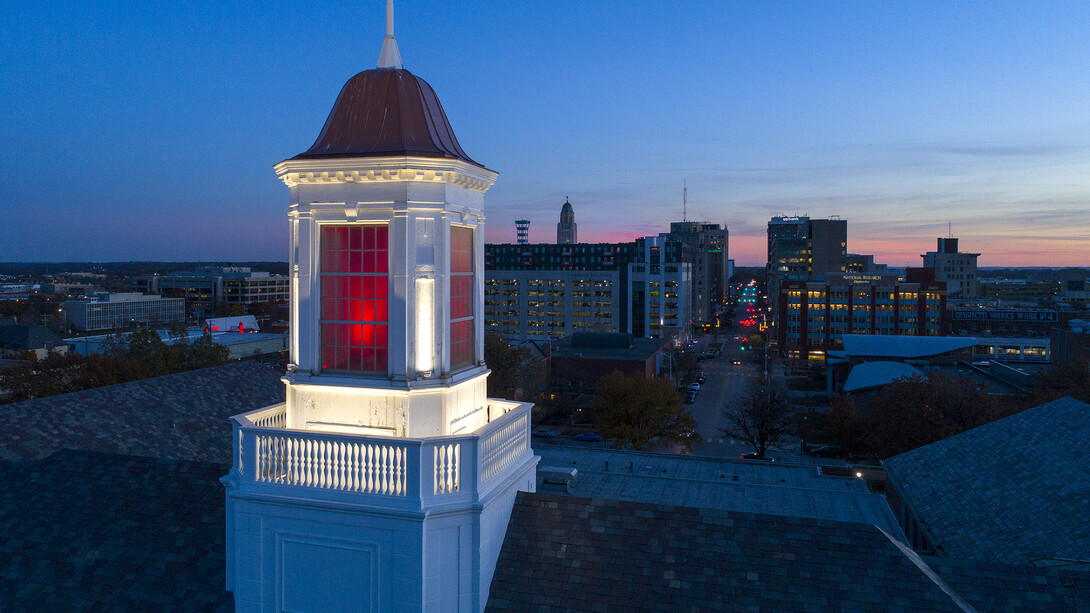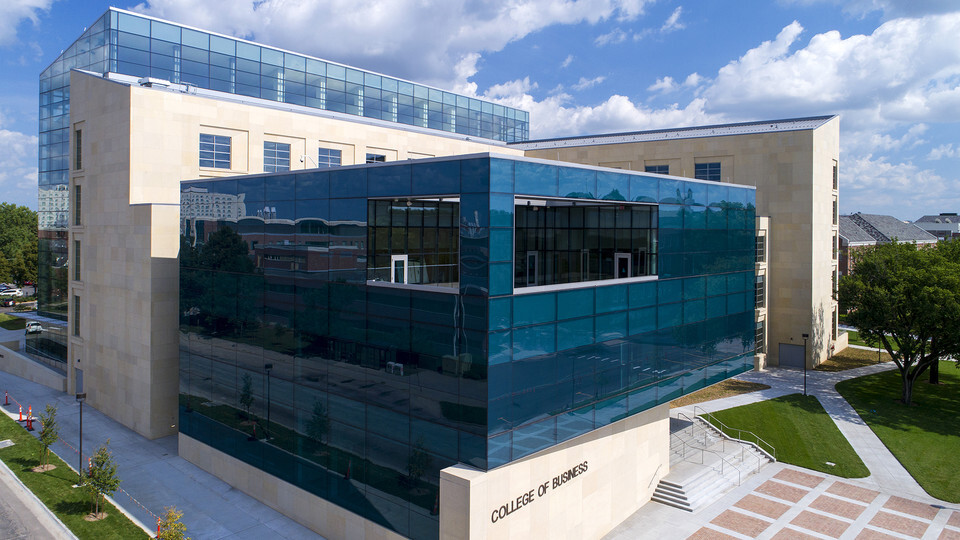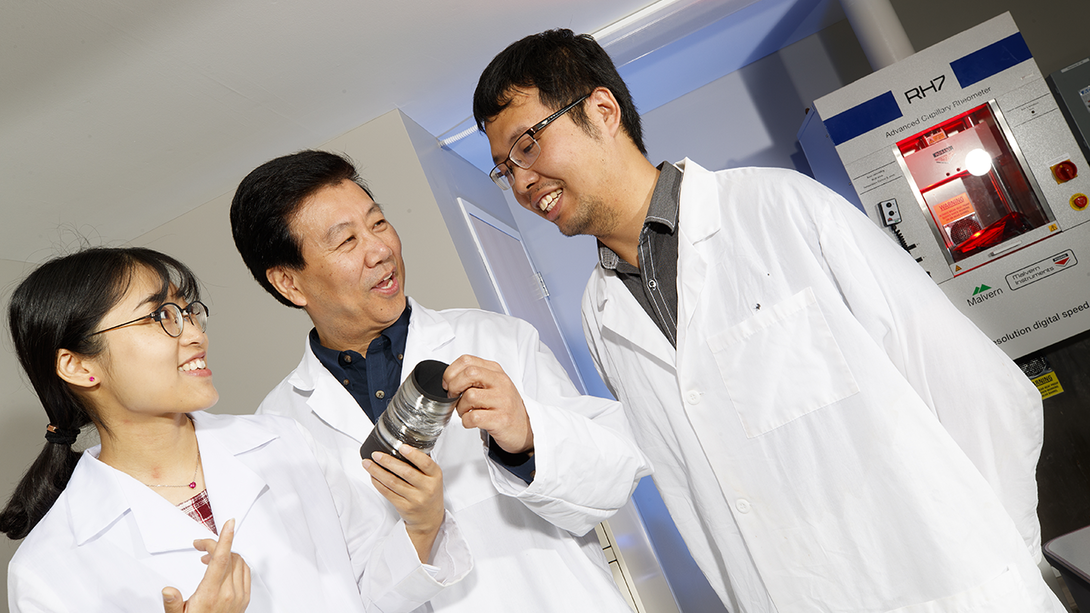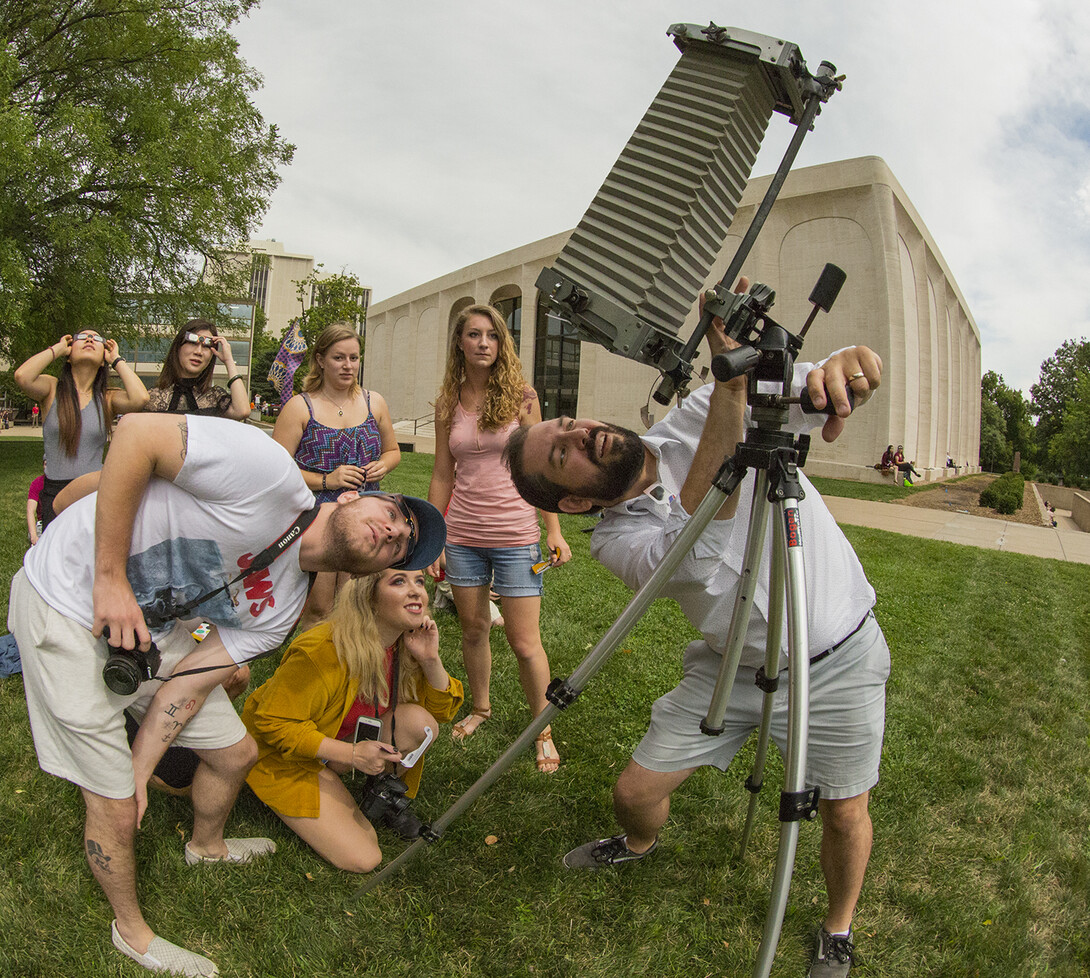
Despite great challenges in 2017, the University of Nebraska–Lincoln continued to build momentum in research, scholarly activity, growth and collaboration.
As calendars flip and Dear Old Nebraska U. prepares for its 150th-year celebration, the university is opening 2018 with a renewed and engaged unity of purpose. Here’s a look back at the year at Nebraska and a handful of highlights coming in the new year.
Momentum, recognition and growth
Fueled by a record freshman class, Nebraska’s student population surged to an all-time high of 26,079 in September, marking the third straight year of record enrollment. The fall 2017 student body was the most diverse in the university’s history.
Nebraska remained highly ranked in the U.S. News & World Report’s annual ratings, placing among first-tier national universities and top-ranked programs throughout the year. The university was designated a “Best Buy” in the Fiske Guide to Colleges 2018, continued to be listed as a top institution in national “Best for Veterans” rankings and saw record participation in Education Abroad in 2017.
The university’s tech transfer rate — its ability to bring research to the marketplace — was ranked among the nation’s best. Other top national honors were collected by Nebraska Innovation Campus, Digital Commons and, of course, the marvelous Husker volleyball squad.
Also on the national front, 11 students in the College of Journalism and Mass Communications took home the grand prize at the Robert F. Kennedy Journalism Awards ceremony, held May 23 in Washington, D.C. The students won for their depth-reporting project, “The Wounds of Whiteclay: Nebraska’s Shameful Legacy,” which delved into the issues an impact of alcohol sales in the small community of Whiteclay. It was the first time in the event’s 49-year history that the top prize went to a college group.
Plans for Nebraska’s Johnny Carson Center for Emerging Media Arts continued to come together in 2017. Megan Elliott took the helm as the center’s founding director in January. And, in August, 25 international leaders and innovators in new media met on campus to offer advice and expertise as the center’s initial advisory board.
In the Big Ten Conference, Husker teams took top honors in speech and debate, baseball, volleyball and women’s gymnastics.

Building for the future
The university opened the fall 2017 semester with four new buildings, including Howard L. Hawks Hall, the home to Nebraska Business. Other new facilities include the Willa Cather Dining Complex, Martin Massengale Residential Center and Veterinary Diagnostic Center. Work continued on the University Health Center and an 8.1 million gallon thermal energy storage tank, which will bring nearly $900,000 in energy cost savings annually.
Nebraska closed 2017 with the implosion of the 13-story Cather and Pound residence hall towers. Cleanup of the site begins in early January. The property is designated as a general building site, but no specific construction plans are in place. It will be converted into a temporary green space.

New leadership takes shape
On April 6, Ronnie Green was officially installed as Nebraska’s 20th chancellor. Green was named the university’s leader in April 2016.
Green’s leadership team continued to take shape in 2017 as Donde Plowman was named executive vice chancellor/chief academic officer, and Michael Boehm took over as Harlan Vice Chancellor of the Institute of Agriculture and Natural Resources. Both Plowman and Boehm assumed their new leadership roles in January 2017.
Additional leadership selections include: Laurie Bellows, interim vice chancellor for student affairs; Tim Carr, interim associate vice chancellor and dean of graduate education; Beth Doll, interim dean of the College of Education and Human Sciences; Megan Elliott, founding director of the Johnny Carson Center for Emerging Media Arts; Kathy Farrell, dean of the College of Business; Abby Freeman, director of admissions; Tiffany Heng-Moss, interim dean of the College of Agricultural Sciences and Natural Resources, replacing Steven Waller, who became interim director of the Center for Grassland Studies; Richard Moberly, dean of the College of Law; Bill Moos, director of athletics; Bill Nunez, interim vice chancellor for business and finance, replacing Chris Jackson, who retired after 17 years of service to the university; Curtis Weller, head of food science and technology and director of the Food Processing Center; Amber Williams, assistant vice chancellor for academic services and enrollment management; and Mike Zeleny, chief of staff and associate to the chancellor.

Big Red research impacts
Nebraska research continued to make big impacts in 2017, earning major grants and building on its reputation for excellence in a wide variety of disciplines.
Using the brightest light ever produced on Earth, Nebraska physicists in the Extreme Light Laboratory were among the first to observe changes in a vision-enabling interaction between light and matter. The project, reported in the June 26 edition of Nature Photonics, yielded unique X-ray pulses with the potential to generate extremely high-resolution imagery useful for medical, engineering, scientific and security purposes.
In biomedical/life science fields, Nebraska researchers found that a nanoparticle can be used for tumor detection; furthered work into a revolutionary stroke treatment procedure; reported progress toward the bioengineering of cartilage; developed lower-cost heart disease therapies; reported progress on an HIV vaccine; advanced the understanding of delivering vaccines in pill form; created a smart bandage that could promote improved healing; built a soft robot that shows promise toward improving colonoscopies; studied a flu shot that could deliver lifelong protection; and showed how a microscopic membrane can fight gum disease.
Nebraska research also furthered understanding of Edith Lewis’ impact on the writings of Willa Cather; improved biodegradable plastics; created a law clinic that advocates for children in the Cornhusker State; examined ancient civilizations in Turkey and Honduras; advanced defect detection techniques for bridges; improved rice crop yields; and helped prepare child welfare professionals to strengthen Nebraska families and protect children from neglect and abuse.
Learn more about the year in research at Nebraska.

Great moments
From experiencing a total solar eclipse to celebrating an NCAA volleyball championship, 2017 offered a series of great moments at Nebraska. Others included Ev Williams, co-founder and former CEO of Twitter and founder and CEO of Medium, delivering the undergraduate commencement address on May 6; the hiring of Nebraska alum Scott Frost to lead Husker football; and the implosion of Cather and Pound residence halls.
See 17 photos featuring Nebraska’s most iconic moments of 2017.

Looking ahead to 2018
In the new year, Nebraska will continue to pursue and define excellence in its tripartite mission of research, education and engagement. Stories to expect in 2018 include:
A formal launch of the university’s 150th anniversary year, which will be celebrated from July 1, 2018 to June 30, 2019;
First phase transformation of the Memorial Mall east of Memorial Stadium, opening of the student health center and University of Nebraska Medical Center’s Lincoln Division of Nursing, and second-phase development of Nebraska Innovation Campus;
Nebraska continuing to lead the nation in the discussion on freedom of expression, academic freedom, diversity and inclusion; and
Continued development of a 2025 strategic plan, which will formally launch in February 2019.
“As chancellor, I wound down 2017 with a deep sense of pride in who we are at Nebraska, with elevated and energized expectations for the year ahead,” Chancellor Green said. “Now, we enter a new year with unity of purpose to continue our momentum, serving our students, Nebraska, the nation and the world.”







